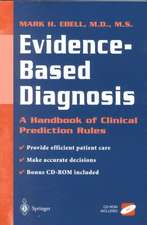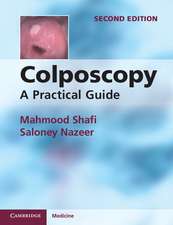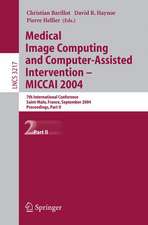The Cerebrospinal Fluid
Editat de Robert M. Herndon, Roger A. Brumbacken Limba Engleză Paperback – 26 sep 2011
| Toate formatele și edițiile | Preț | Express |
|---|---|---|
| Paperback (1) | 1412.99 lei 6-8 săpt. | |
| Springer Us – 26 sep 2011 | 1412.99 lei 6-8 săpt. | |
| Hardback (1) | 1420.13 lei 6-8 săpt. | |
| Springer Us – 30 iul 1989 | 1420.13 lei 6-8 săpt. |
Preț: 1412.99 lei
Preț vechi: 1487.36 lei
-5% Nou
Puncte Express: 2119
Preț estimativ în valută:
270.38€ • 283.24$ • 224.08£
270.38€ • 283.24$ • 224.08£
Carte tipărită la comandă
Livrare economică 09-23 aprilie
Preluare comenzi: 021 569.72.76
Specificații
ISBN-13: 9781461288817
ISBN-10: 1461288819
Pagini: 356
Ilustrații: XIV, 306 p.
Dimensiuni: 155 x 235 x 19 mm
Greutate: 0.5 kg
Ediția:Softcover reprint of the original 1st ed. 1989
Editura: Springer Us
Colecția Springer
Locul publicării:New York, NY, United States
ISBN-10: 1461288819
Pagini: 356
Ilustrații: XIV, 306 p.
Dimensiuni: 155 x 235 x 19 mm
Greutate: 0.5 kg
Ediția:Softcover reprint of the original 1st ed. 1989
Editura: Springer Us
Colecția Springer
Locul publicării:New York, NY, United States
Public țintă
ResearchDescriere
For centuries the great minds of medical science puzzled over the importance of the cerebrospinal fluid. As far back as Hippocrates, it was thought that this "phlegm" that flooded the intracranial contents had pathological significance. However, not until the late 1800s, when Quincke introduced and popularized lumbar puncture, did physicians take an interest in the study of this fluid in relation to clinical illness. Since then a variety of techniques for obtaining cerebrospinal fluid from various sites have developed, and the relationship of cerebrospinal fluid to a variety of disease processes has received considerable study. In this volume, we have attempted to assemble reviews of some of these important developments during the past century. Chapter 1 contains a historical review of key investigations that helped shape our concepts of cerebrospinal fluid from the earliest recorded description by the author of the Edwin Smith Surgical Papyrus in the seventeenth century B. C. to contemporaries such as Kabat, Glusman, and Knaub, who introduced quantitative determinations of cerebrospinal fluid gamma globulin levels. In Chapter 2 there is a description of our current understanding of the anatomical compartment for the cerebrospinal fluid and the physiology of its formation, circulation, and absorption. Dr. Richard Leech in Chapter 3 contributes a comprehensive description of the disorders associated with excessive quanti ties of cerebrospinal fluid-commonly referred to as hydrocephalus. A variety of techniques for properly collecting and evaluating cerebrospinal fluid are detailed in Chapter 4.
Cuprins
1. Brief history of the understanding of cerebrospinal fluid.- 2. Anatomic and physiologic aspects of the cerebrospinal fluid space.- 3. Abnormalities of cerebrospinal fluid production and flow and hydrocephalus.- 4. Collecting cerebrospinal fluid.- 5. The medical uses of injection into the cerebrospinal fluid space (intrathecal and intraventricular injection).- 6. Cerebrospinal fluid infections.- 7. Nonimmunoglobulin proteins in human cerebrospinal fluid.- 8. Human cerebrospinal fluid immunology.- 9. Light microscopic cytology of cerebrospinal fluid.- 10. The cytology of cerebrospinal fluid: Methods and normal constituents.- 11. Cytopathology of the cerebrospinal fluid.- Color Plates—Following page 178.











